If you bought a dog home and wondering how to potty train dogs, you are at the right place. Keep reading to find out more on potty training dogs.
Patience, effort, and consistency are required while housetraining your dog or puppy. Mistakes are inevitable, but you can get your new family member on the right path by following basic housetraining recommendations.
One of the critical steps you can take for a long, happy life together is learning to potty train puppies at the appropriate time and place. One of the reasons dogs lose their homes or end up in shelters is house soiling.
That’s why it’s essential to conduct a preliminary study on how to home train a dog, determine what might work best for your scenario, and devise a strategy. Fewer people are ready to put up with a dog who ruins rugs and floors and leaves an annoying mess to cleanse up after a long day at work.
When to begin house training puppy?
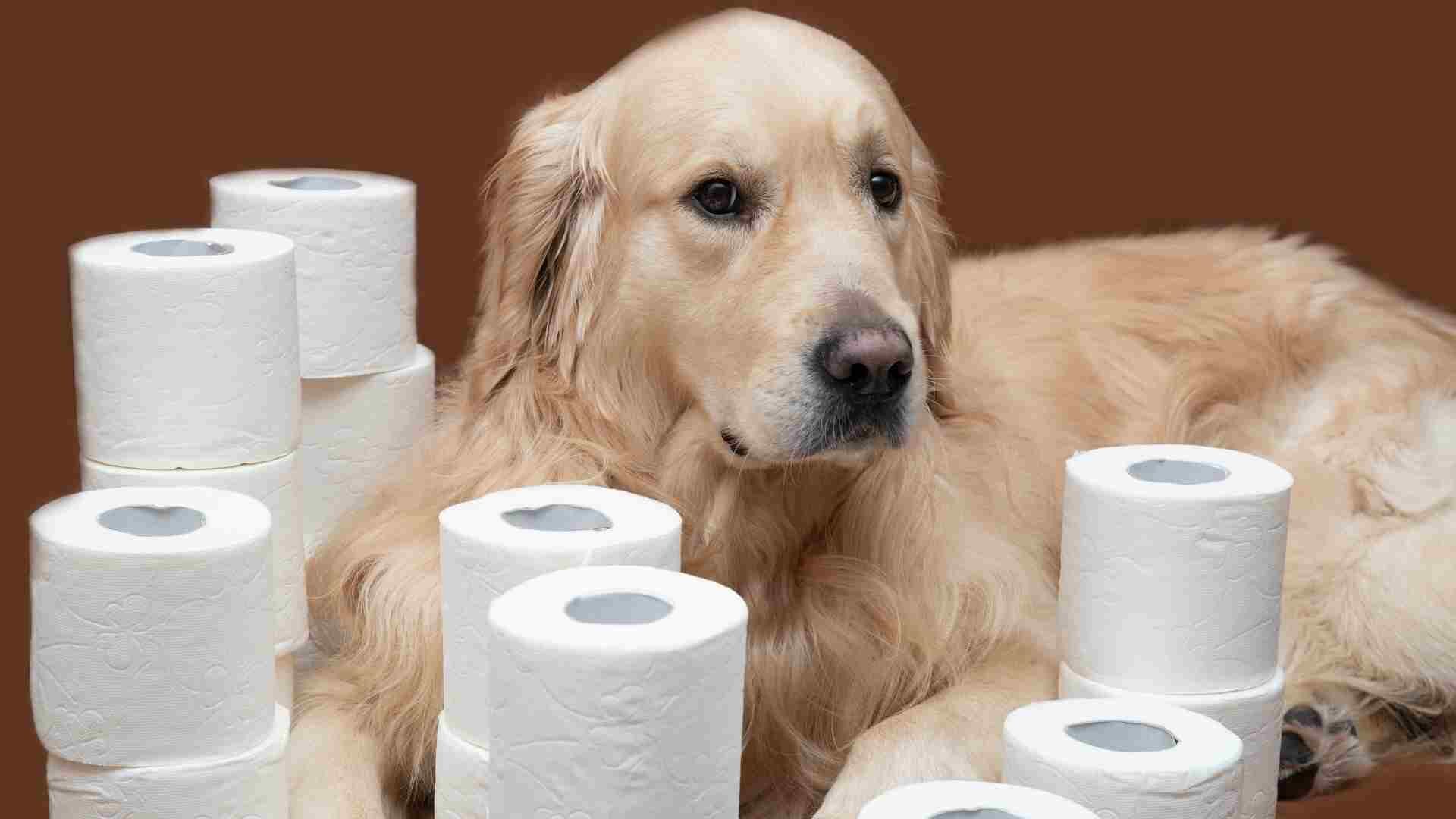
Most people who are new to dogs are uncomfortable with the notion of restricting their puppies in a crate, but this aversion usually fades after some days of living with a new pet. Crates for dogs make life easier. For various reasons, such as vet appointments, travel, recovery, and safety, it’s a great idea to get your dog used to one.
The idea behind utilizing a crate for housetraining is that dogs are extremely clean creatures that don’t appreciate having a urine-soaked mat in their living surroundings any more than you do. The crate should be spacious for the dog to lie down, stand up, and turn around comfortably.
If it’s too big, the dog will think it’s fine to eliminate one corner and then contentedly lie down away from the mess. Many crates include dividers that may be adjusted as your puppy develops.
Dogs are den animals, and whether you give one or not, they will seek out a small canine cave for security. This makes teaching your dog to appreciate her crate pretty simple.
The puppy will typically let you realize when she has an urge by whining and scratching. That’s her indication that she has to get out of her tiny den. Now is the time to act since if you allow your dog to lose control of her crate, she will learn that it is acceptable to destroy her living place. Then she’ll have no qualms about dropping tiny parcels all-around your neighbourhood.
What equipment is required for potty training a dog?
1. Collar and leash
This is most likely something that you already own. If you have a fenced yard for training, keep your puppy on a leash (at all times). By doing so, he will distinguish between going out to play and going out to do business.
When you take your dog to their designated restroom location, the last thing you would like is for them to get side-tracked and forget why they’re there.
You need them to concentrate on the task at hand. You’ll need a leash and collar to accomplish this because you’ll need some authority over their movement.
You can use a leash and collar to take them to the bathroom at their appointed times, and by limiting their free movement, they are less likely to go in the incorrect place.
2. Crate
You’ll need an appropriate crate, which your puppy’s size will decide. Even if you are not monitoring him, it will keep him secure. It will also educate him to control his urge to pee or poop to keep his home clean.
You can restrict your puppy to a crate when you can’t oversee them and take full advantage of their baser inclinations to avoid soiling in their den.
You take away their capacity to slip away and potty where they shouldn’t be putting them in a crate. But, more crucially, because they will make every effort not to dirt in their crate, you assist them in developing bladder and bowel control.
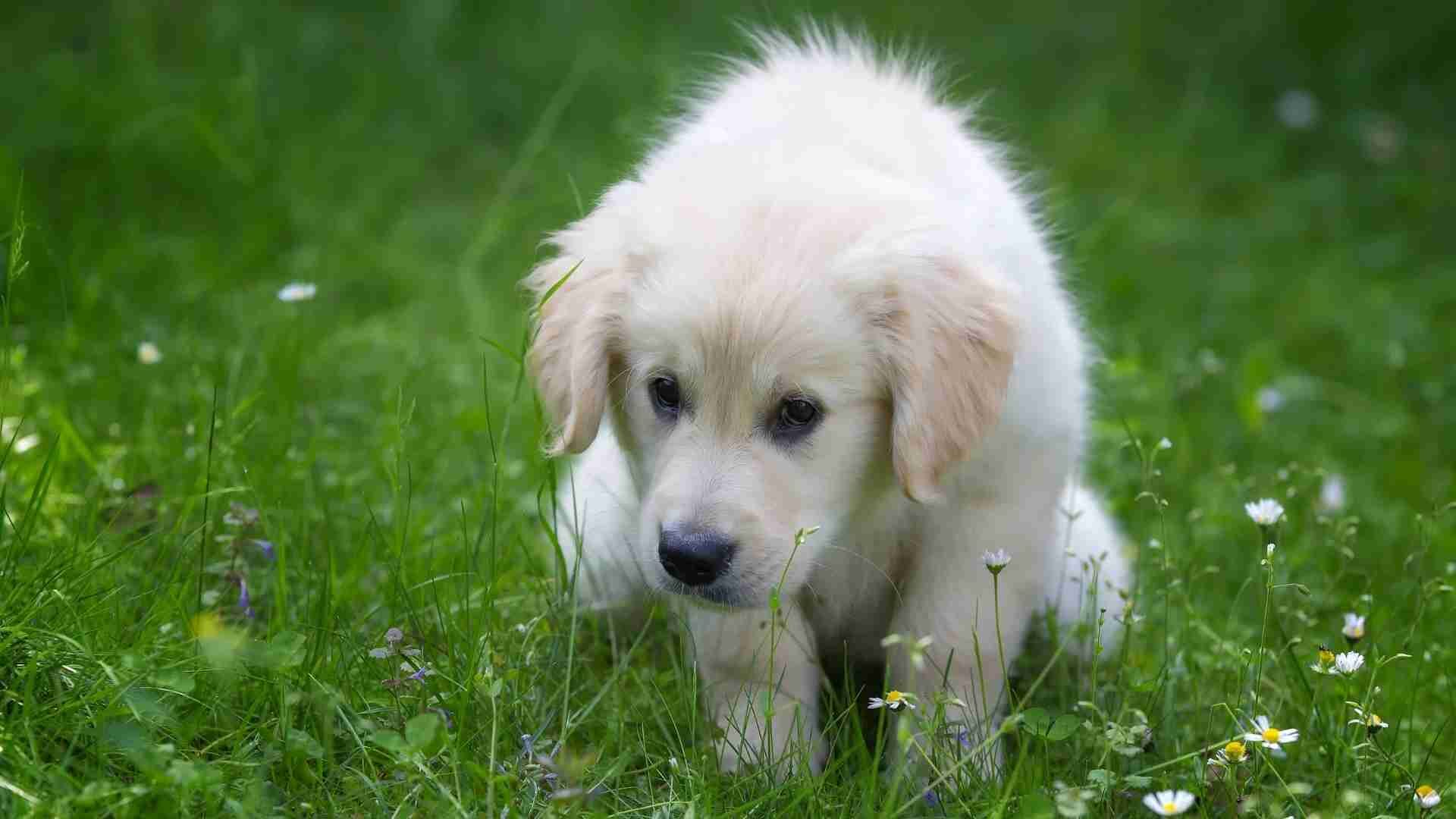
3. Treats
Always have treats on hand, whether toilet training your dog or teaching your pet something else. Reward him right after he removes, so he learns that he will be rewarded for pottying in the proper location.
The most crucial component of practical house training is lavishly rewarding your dog when they’re doing something well.
This involves praising them when they go to the bathroom in the appropriate location, whether outside or indoors.
If a puppy is lavishly praised for something they do, it will want to repeat the behaviour to get the same praise. Most contemporary, pleasant, reward-based training strategies are built around this concept.
You should also remember that you must not give a treat every time. Most of the time, mix it up with lavish praise, a game of tug, a pleasant stroll, or other types of play as a reward, and just a high-value food item now and then.
4. Pet gates or barriers
These are effective ways to keep your dog safeguarded and protect it from wandering about the house unsupervised. A pet barrier is used to restrict your puppy or dog to a single room or restrict entry from a single room.
A pet barrier is similar to a baby gate or the gate at the bottom of the stairs that we’ve all seen. It also serves the same purpose.
A pet barrier is particularly beneficial when you need to leave your dog alone for an extended period, and a crate would be too restrictive and restrict living space till you can allow them and increase the area they’re allowed to wander.
They won’t be capable of causing any harm in your absence if you confine them to one easy-to-clean and puppy-proofed room, such as your kitchen and bathroom, and, more crucially for house training, they won’t spoil any of your pricey carpets or rugs.
5. Cleaning chemicals and stain removers
Effective cleaning and properly removing any scents are essential during the clean-up procedure, especially for incidents in your house.
Any aroma that your dog detects will entice them to defecate on that area again in the future.
You should not use just any old cleanser because it may leave behind part of the original odour. Worse, they could contain ammonia, a urine-like odour, attracting a puppy to the area to use as a toilet. Clean dirty areas with an odour and stain remover where you don’t want your dog to defecate or pee.
6. Puppy pads
Puppy pads are soft absorbing pads that should urge your puppy to pee on so that it is captured and easy to clean up and maintain the floors and carpets tidy.
Puppy pads are available in various shapes and sizes, with many of them scented to entice your puppy to excrete on them. We can’t notice the scent because it’s too weak, but a dog’s keen nose can.
The fragrances range from grass to ammonia to specially produced pheromones, all of which are proven to urge a puppy to urinate in that particular location.
What are the things you should do with potty-training dogs?
1. Crate training can help with potty training
Crate training is a powerful technique for potty teaching your puppy and building a secure environment for him to call home. Because dogs are inherently den creatures, their impulses will tell them to seek a quiet spot to relax at the end of each day.
Dogs do not want to defecate wherever they eat or sleep, so teaching your puppy to be at ease in a crate is a terrific method to reduce accidents in the house. The crate must not be used as a punishment, but rather whenever your puppy cannot be supervised immediately and during naptime and bedtime.
It’s critical to get the right crate size for your puppy, especially if you have a large breed dog that grows quickly. Remember that your puppy needs enough space to stand, turn around, and lay on the floor calmly.
Any additional space will allow your dog to rest on one side while peeing or pooping. The divider in many crates may be changed as your puppy develops.
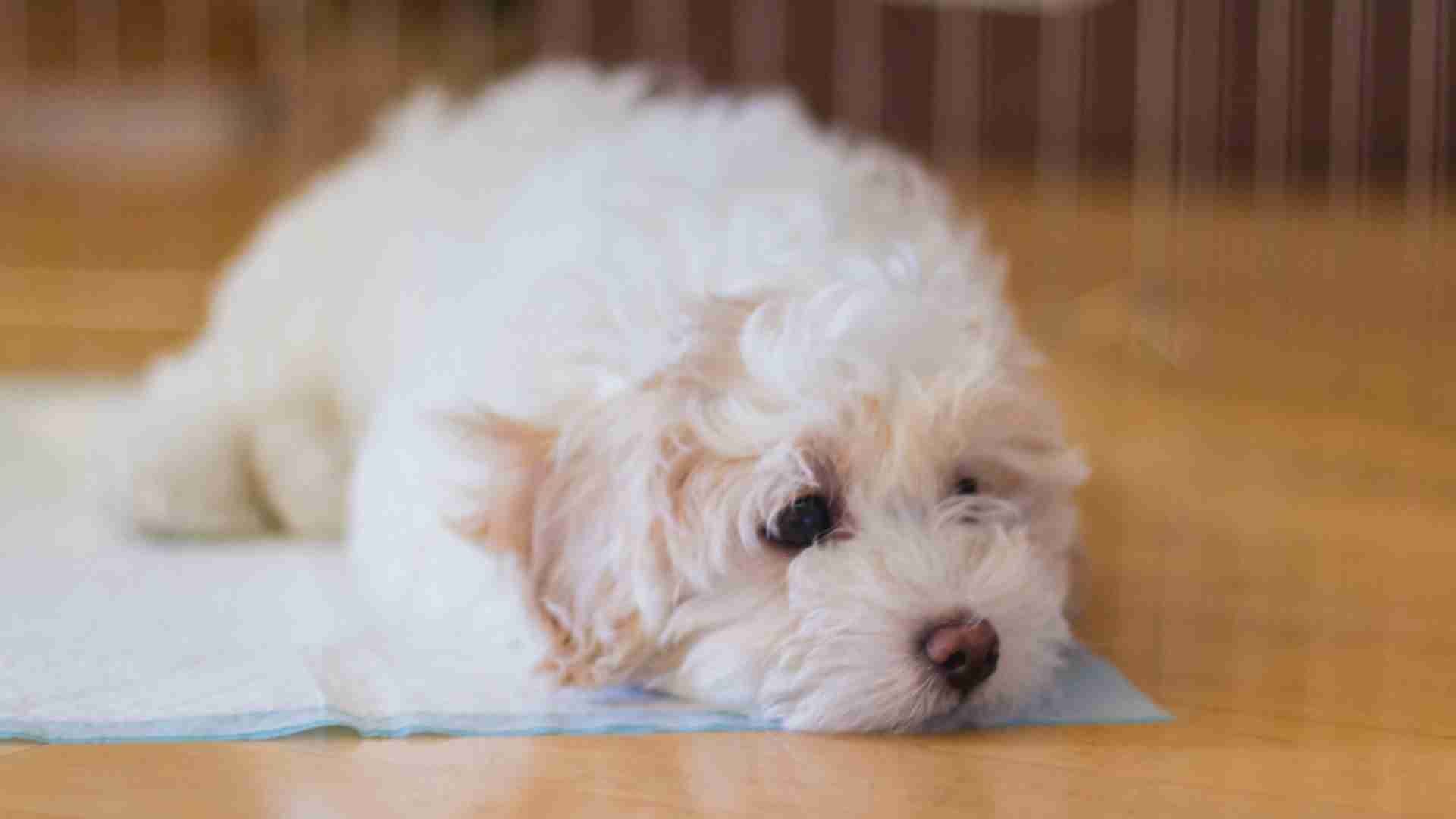
2. Follow a feeding schedule
It is standard practice to feed your dog two meals per day. Every day, provide every meal at the very same time. Because dogs will typically eliminate quickly after eating, creating a consistent feeding plan will help to reduce confusion and home accidents.
3. Positive reinforcement should always be used
The secret to practical potty training is positive reinforcement. Positive reinforcement will educate your puppy that going to the potty outside is rewarded.
Reward your puppy with verbal praise, cookies, or a favourite toy every time they eliminate outside. The reward should come right after the incident so that your puppy associates eliminating outside with being rewarded.
4. Frequently take your puppy out
In particular, puppies below 12 weeks of age must be taken outdoors every one to two hours. Puppies are still building the muscles needed to contain their eliminations until they are 12 weeks old. Taking your dog out after napping, playing, feeding, or drinking is also a beneficial practice.
What are the things you should do not with potty-training dogs?
1. Punishment rather than positive reinforcement
Retribution is never an acceptable or appropriate form of instruction. To “teach them a lesson,” old “training practices” suggested beating a dog with a paper or wiping their face with their faeces.
Dogs do not associate these behaviours with wrongdoing. On the other hand, punishment encourages your puppy to be afraid of its owners or those who try to punish them. Keep in mind that potty training requires time and patience.
2. Failure to stick to a schedule
Failure to stick to a regular potty break and meal schedule might cause your puppy to become confused, resulting in more problems in the house.
Having a puppy is a significant responsibility. The pet owners should follow the routine and continually oversee their dogs as a child. The more trips outside you take, the better! The more times your puppy is permitted to excrete outside effectively, the faster they will learn to use the toilet.
3. Crate training and the use of potty pads
Unless you have a specific circumstance, especially in a large apartment or having limited mobility, puppy pee pads must not be utilized as an alternative for going outside. Allowing pups to relieve themselves on pee pads within the house can lead to confusion about where they are allowed to relieve themselves. This can delay potty training and must be prevented if at all feasible.
How to potty train a dog in 5 steps?
Below mentioned is an extensive guide on how to potty train dogs.
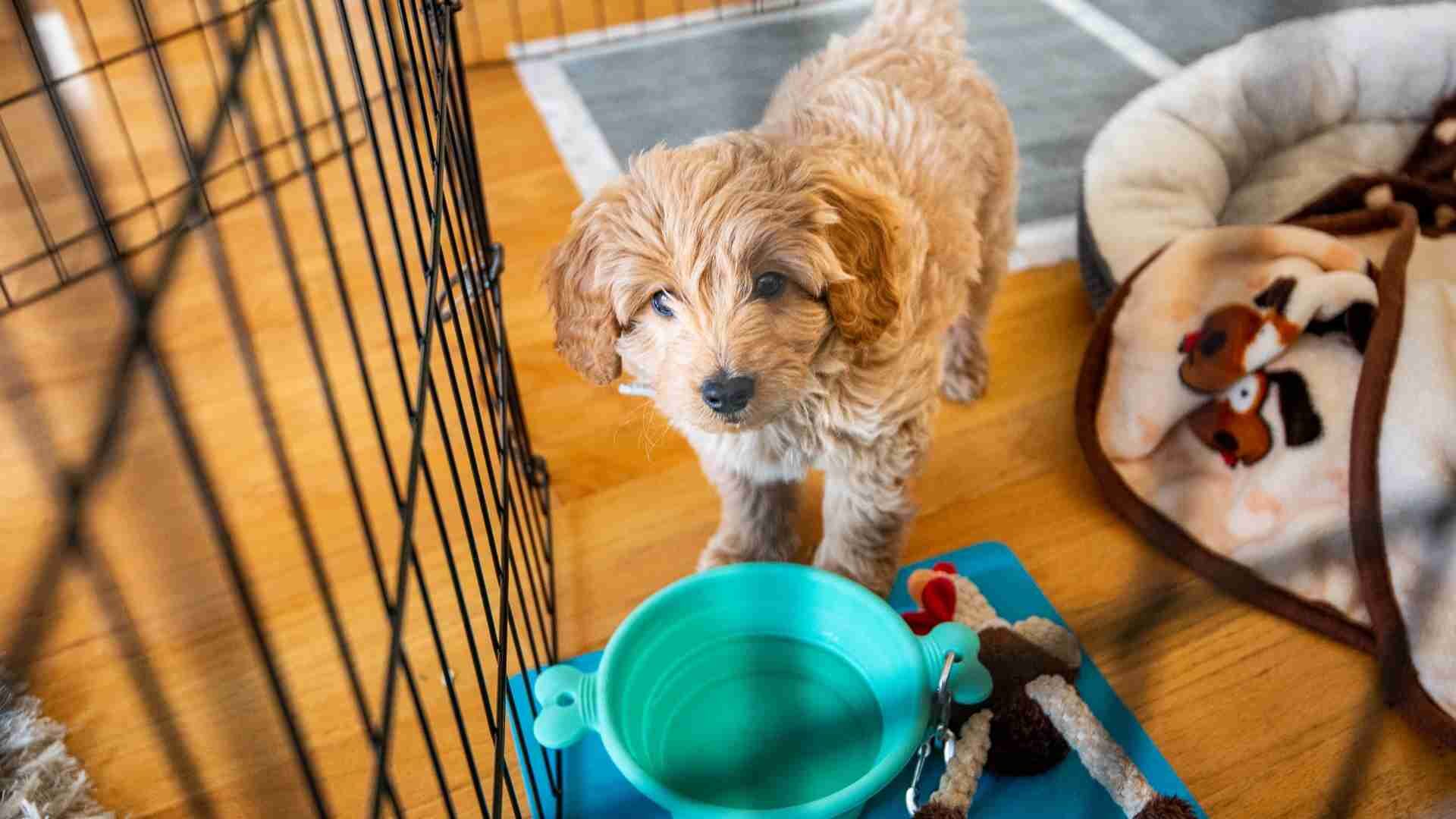
1. Take your dog outside at least once every two hours
As soon as they wake up, both during playtime and after eating or drinking.
2. Pick a potty area outside and take your dog on a leash every time
Use a particular word or phrase when your dog goes to the bathroom to teach them what to do afterward. After going potty, take them for a lengthier stroll or some fun.
3. Reward your dog with a snack when he goes outdoors to relieve themselves
Reward or encourage them immediately after they’ve performed the task rather than stepping inside. This stage is crucial since praise for going outside is the only way to educate your dog on what is anticipated.
Make sure they’re finished before rewarding them. Dogs are easily side-tracked, and if you reward them too quickly, they may fail to complete the task until they get home.
4. Set a regular feeding regimen for your dog
What happens to a scheduled dog comes out of a planned dog. Dogs may have to be fed 2 to 3 times per day, depending on their age. If you give your dog the same food and water at the exact times daily, they’ll be more inclined to excrete at about the actual times, making daily training easier for both of you.
5. Start picking up your dog’s water dish two and a half hours before sleep
This is to lessen the chances of them needing to go to the bathroom during the night. Most dogs can sleep for seven hours without going to the toilet.
If your dog awakens you at night, don’t make a big fuss about it; else, they’ll believe it’s time to play and refuse to go back to sleep. Turn off as many lights as feasible, don’t speak or interact with your dog, take him out to eliminate themselves, and put them back to bed.
How long would it take to potty train a dog?
When it comes to potty training a dog, there is no set schedule. There are numerous aspects at play, the most significant of which is consistency. When your dog follows their training plan, be sure to reward them.
A dog’s house training usually takes 4-6 months, but it might take up to a year for certain dogs. Size is a factor to consider. Smaller breeds, for example, have smaller bladders and greater metabolisms, necessitating more frequent excursions outside. Another factor to consider is your dog’s past living situation. You may need to assist your dog in breaking poor behaviour to create better ones.
And don’t panic if you have setbacks while training. They will learn as long as you maintain a management program that includes bringing your dog out at the first sign of needing to go and rewarding them.
According to experts, House training your dog should begin between the ages of 12 and 16 weeks. They have quite enough control over their bowel and bladder functions at that age to learn to contain them.
Housetraining would take longer if the puppy is older than 12 weeks when you take them home and has been excreted in a cage (and maybe eating their waste). You’ll have to change the dog’s behaviour with encouragement and incentive.
What are the signs that your puppy needs to eliminate

When your dog wants to potty, it will give you signs. Sniffing, fidgeting, starting to circle, and squatting are examples of these behaviours. A whimpering or pacing dog, and a dog that has been gnawing upon anything for a while and then change to do something else, maybe suggesting that it wants to go to the potty. You’ll notice fewer accidents if you keep a close eye on your dog during the potty-training phase.
Below listed are the common signs that your puppy needs to eliminate.
- Changes in behaviour, activity, or play that occur suddenly
- Circling
- Whining
- Going to the front door and pawing or clawing at it
- Going to a part of the house that had previously been dirty
- Groin/rear licking or sniffing
Watch 7 quick tips for potty training a puppy or dog | Video
Top 5 FAQs and answers on how to train a dog to potty
Below listed are five frequently asked questions (FAQs) on the context of “how to train a dog for potty,” followed by appropriate answers.
How often should my dog be taken outside to potty during the day?
The number of toilet journeys your dog requires is determined by his age.
If your puppy’s age is under six weeks old, you should take him out every 30 to 45 minutes during the day. Intend to take them outside every hour if he’s 6-12 weeks old. He’ll probably need a toilet break every two hours from 12 to 16 weeks, then every three hours from 4-6 months.
When should you start potty training your puppy?
When a puppy is 12 to 16 weeks old, it is usually ready to be trained. They have pretty enough bladder control to be taught when to go out.
What is a challenging dog breed to housetrain?
When it relates to canine breeds, generalizations are impossible to make. However, the temperaments of most dogs of a particular species will be similar. As a result, the most difficult dog breeds to housetrain are Jack Russell Terriers and Yorkshire Terriers.
The fact that these ‘harder to teach dogs’ are also small dog breeds is unsurprising. Potty training little and toy dog breeds are notoriously difficult. Their smaller stature and rapid metabolism are often blamed for this.
How to quickly potty train your puppy?
In case you need to potty train your dog quickly, you’ll need to be ready to let him out at all day hours. Potty training can be completed in seven to fourteen days if you have the right plan and a rapid learner puppy. However, we want to emphasize that this is not the usual.
Don’t expect a quick fix when it comes to potty training. Positive encouragement is an effective strategy to hasten toilet training. Include frequent potty breaks in your routine, and stay with your dog to watch for signs that they need to go out.
Is it possible to potty train an eight-week-old puppy?
Potty training your puppy at eight weeks is indeed a bit unrealistic. They can only retain their bowel for two to three hours at most. At eight weeks, you may assist them in getting to where they should go. Anticipate them not to inform you that they need to leave. You can start developing habits for yourself, and your puppy will begin picking up on the schedule as they get older.
Conclusion
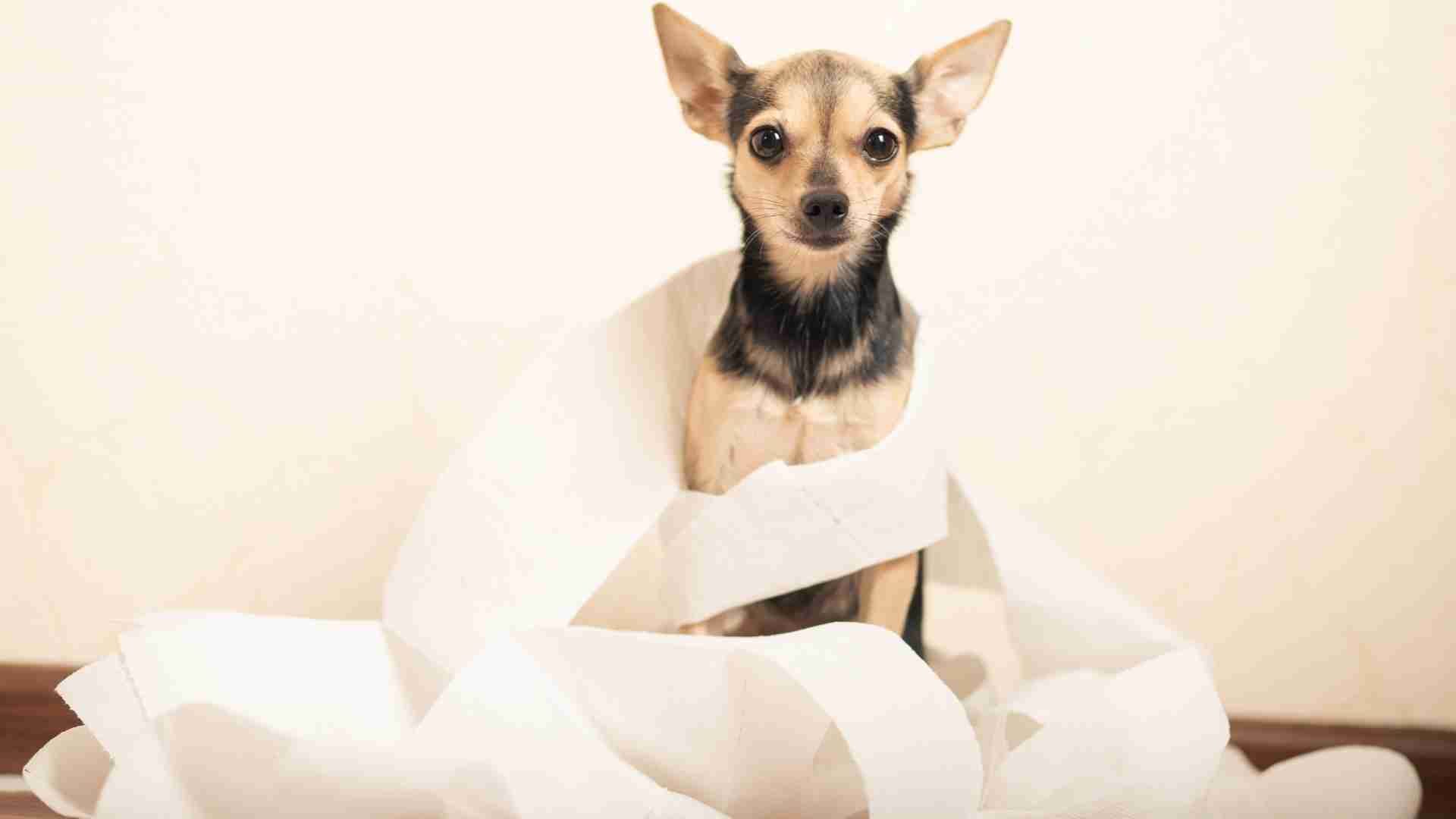
This article provided an extensive guide on “how to potty train dogs.” The article contains instructions on beginning puppy house training and required equipment. The article also lists the dos and don’ts of potty-training dogs. Frequently asked questions regarding “how to potty train dogs” are also answered.
Bottom up
Please comment below about your ideas and share this “How to Potty Train Dogs in 5 Easy Steps: Guide with Tips” article with your friends.
Stay tuned with our website to find out more exciting stuff. Don’t forget to check out our previous articles too.
Until the, Read about, What Is a Microchip in a Dog For: Guide with Pros and Cons




